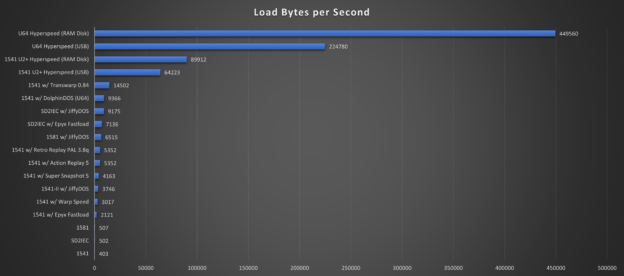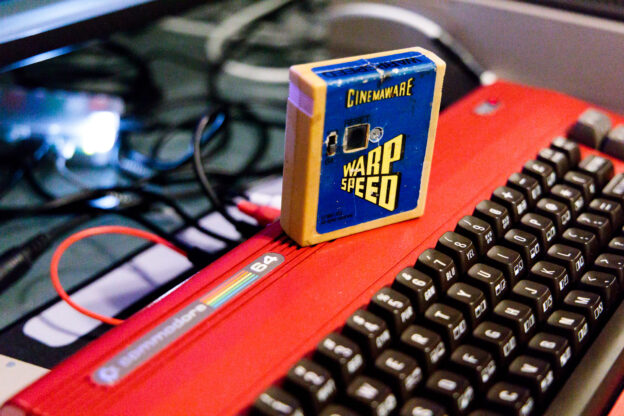Looks like a documentary I would enjoy watching. If this interests you, consider backing the project to help complete it:
https://www.iadoremy64film.com/

Looks like a documentary I would enjoy watching. If this interests you, consider backing the project to help complete it:
https://www.iadoremy64film.com/
I took my family for vacation to Branson, MO, and we stopped by the 1984 Arcade there. I had been to the 1984 Arcade in Springfield before, and this is much the same. Admission is a flat $10 per day per person, and you get unlimited video game plays. Pinball games are $0.25 to $0.50 a play.
This arcade is fun, clean, and has a great atmosphere, with 80s music and videos playing. I think only two arcade machines on the floor were out of order. I basked in the retro glow for a while before playing some Centipede, Tempest, Stargate, Zaxxon, and then Gauntlet and Vindicators with the kiddo.
I recorded this video for vacation memories, not to give a detailed review of the arcade or show all of the games they have on the floor. But I think it gives a good sense of the ambiance. Take a look if you’re interested.
Head on over to the 1984 Branson arcade website for more details.
It was discovered that a bug in GB Reorganizer was causing the games MoonShadow and Moonshadow to be extracted into the same folder, instead of getting separate folders with game IDs. This has been fixed, bringing the version number up tp 4.0.4.1.
Also, I have updated the supported Windows versions to 8, 10, and 11. It probably works on older versions going back to Windows XP, but I won’t be doing any testing on those.

I’ve picked up a few more utility cartridges over the last year and finally got around to playing with them. Using CBM Disk Transfer Benchmark, I’ve compiled transfer rate comparisons for the Mach 5, Better Working Turbo, KCS Power Cartridge, and Final Cartridge III.
I decided it made sense to have a dedicated page for this data, so I’ve put all of my speed loader benchmark data on a dedicated page. It includes tables and graphs.

Krill has given us Transwarp, a special 1541 loader that is able to push the speed of loading a file from the 1541 drive far beyond the limits that hardware-modified systems reached. And it requires no special hardware. With a little bit of prep, I was able to test it with CBM Disk Transfer Benchmark.
How fast is it? Think of it this way: Back in the day, you could spend a bunch of money and open up your C64 and 1541 drives and install DolphinDOS to achieve a load speed that clocked in at 23 times faster than the stock hardware. JiffyDOS, which was easier to install and more ubiquitous, could only provide you with a 9x load time improvement over the base hardware. Transwarp is capable of loading files 40 times faster than the stock system, and requires no hardware modifications or cartridge.
This is impressive and totally legitimate. The 1541 and C64, which gave us a measly 403 bytes per second transfer rate when loading files, can be pushed to do the same loading task at 16,056 bytes per second! And all in software!
Not to put too fine a point on it, but here’s another way to look at it: the stock 1541 with C64 takes a almost two minutes (1:51.5) to load a 177 block file. Transwarp can load that file in three (0:02.8) seconds. (And did I mention it doesn’t require any hardware changes?)
Note that Transwarp can actually achieve up to 50x the load speeds when file overhead is excluded. The 40x score is as timed by Disk Transfer Benchmark with its 177 block data file from within DTB and includes all of the time it takes to JSR into LOAD and return.

About a year ago Gideon updated the Ultimate firmware with support for a new C64 Kernal which allows for DMA loading and saving using the standard LOAD and SAVE Kernal routines. I’m a bit behind on this as this has been out for a while, but I finally got around to testing the load and save times using the CBM Disk Transfer Benchmark tool I wrote in 2020.
Basically what Hyperspeed does is hook the soft-IEC into the Kernal LOAD and SAVE routines but uses direct memory access from the Ultimate 64 (and 1541 Ultimate 2+). As you’ll see, this provides for a near-instantaneous load time, due to the fact that the data is transferred directly into memory, bypassing the IEC bus entirely. The obvious down-side is that it requires a custom Kernal, which is not a big deal, and that it only works for the standard Kernal load and save routines, which is a pretty big deal since that essentially rules out anything that needs real 1541 emulation to work.
Update: I’ve added additional testing data. It was suggested to me that I would get even faster scores than I originally posted if I used the Ultimate 64 RAM disk, which resides in system memory rather than attached storage. This is indeed the case. Also, I repeated the same tests on a 1541 Ultimate-II+ and included those scores in the tables. The 1541 U2+ is not as fast but still beats any other option for load speeds by far.
Testing was performed on an Ultimate 64 in NTSC mode and a 1541 Ultimate-II+ on an NTSC Commodore 64, both using the 3.10a Ultimate firmware with the matching UCI KERNAL.
With attached USB storage, Ultimate 64 Hyperspeed is 26 times faster at saving than the baseline 1541, and a whopping 562 times faster loading than the baseline 1541 with stock Kernal. Using the internal RAM disk is even faster: 102 times faster at saving and a blistering 1124 times faster loading than original hardware.
In fact, it is likely faster than this. Hyperspeed loaded 44,956 bytes (177 blocks) from the Ultimate 64 RAM disk in less than one decisecond (<100 milliseconds). The smallest time interval the TOD clock can return is one decisecond. Once we get faster than 300 milliseconds, these differences are not really possible to measure with precision. 1124 is the maximum possible DTB load score. For all intents and purposes, Hyperspeed can achieve instantaneous load times from the internal flash memory utilizing the UCI KERNAL.
A real C64 with a 1541 Ultimate-II+ cartridge is no slouch either. The U2+ can be configured to use the UCI KERNAL matched with Soft-IEC storage just like the Ultimate 64. For attached USB storage, I measured a 11x save score and 161x load score. The internal RAM Disk of the U2+ increased these to a 13x save and 225x load score.
Read on for the detailed comparison tables.
Michael Steil gives a great run-through of the 1541, including a short history of Commodore floppy disk drives. In addition to explaining the hardware and firmware, he outlines some fastloader and copy protection techniques.
If you like this video, be sure to watch The Ultimate C64 Talk.

A couple of years ago I put a LumaFix64 into my PAL C64 and I was quite happy with the results, using a Sony PVM CRT monitor. You can read about that here. It does a good job of virtually eliminating those “jailbars” from the VIC-II output.
But lately, I am not using CRT displays any more, mainly because I just don’t want to devote the real estate to keeping them out. Instead, I’ve been using a RetroTINK 2X-Pro to scale the s-video (via Commodore4Ever AV Breakout) output from my C64s to HDMI.
I decided to add a LumaFIX to one of my NTSC units and do some actual comparisons. I already knew I was happy with what it does for the picture quality on a CRT monitor, but is it worthwhile when using an HD display through a RetroTINK? Here’s the video:
Note: it may be hard to see the jailbar effect clearly if you’re not viewing the 1080p stream.

“Why limp along on impulse power when you can jump to Warpspeed?”
The Warp Speed cartridge was Cinemaware’s answer to the Epyx Fastload. I can vividly recall reading the advertisements for this cart but I never knew anyone who had one. I finally picked one up and figured it might make an interesting video to explore it.
Of particular interest are the fast I/O benchmarks. Here are the charts from my video. The benchmarking was done with the CBM Disk Transfer Benchmark tool. I’ll update the benchmarks on that page after I finish posting this.
The load speed is a decent showing, but, note the save speed. I think this is the fastest speeder cartridge for saving files that I know of. In order to get faster than this (for save speed), you need to use DolphinDOS.
TL;DR: Today I’ve released a C64 tool: CBM Disk Transfer Benchmark.
Please don’t make any more YouTube videos measuring load times with smartphone stopwatch apps. Thanks!
Read below for my ruminations.
The 1541 disk drive that my family got along with a Commodore 64 and 1702A monitor was slow. Really slow. The slow speed of the 1541 disk drive is legendary. I won’t go into the whole backstory from Commodore, but what it meant in my house was that most of the games we had on disk took a very long time to load.